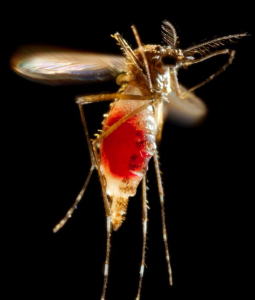NewsDesk @bactiman63
The National Ministry of Health reports that up to epidemiological week 12 of 2023 (from March 19 to 25), 16,143 cases of dengue were reported in the country, of which 14,224 acquired the infection in Argentina. At the moment, the circulation of this virus has been identified in 14 jurisdictions: Buenos Aires, the Autonomous City of Buenos Aires (CABA), Córdoba, Entre Ríos, Santa Fe, Corrientes, Formosa, Chaco, Catamarca, Jujuy, Salta, Santiago del Estero , Tucuman and La Rioja.

Serotypes DEN-1 and DEN-2 have been reported.
During epidemiological week 11 there was an increase in cases of 44.8% compared to the previous epidemiological week. In cumulative terms, between SE1 and SE12, the cases notified during 2023 represent 10% less than those accumulated in the same period of 2020 (last epidemic year), while for 2016 (penultimate epidemic year) there are 34%. below for the same time interval
Concerning chikungunya fever, 657 cases have been registered so far, of which 244 acquired the infection in Argentina, 159 are under investigation and 254 acquired the infection outside the country. At the moment, the circulation of this virus has been confirmed in 7 jurisdictions: Buenos Aires (towns of Almirante Brown, Pergamino, Quilmes and San Martín); CABA, Córdoba (in Córdoba Capital and La Calera), Corrientes (Paso de la Patria), Formosa (in the Tres Lagunas, Las Lomitas and Formosa Capital jurisdictions); Misiones (Puerto Iguazú) and Santa Fe (Rosario and Capital).
Containment
Within the framework of a new virtual meeting of the Federal Health Council (COFESA), the heads of the health portfolios of the 24 jurisdictions analyzed the epidemiological situation of dengue and chikungunya. In addition, progress was made in the coordination and reinforcement of additional joint actions to contain the outbreak that has been registered in the country in recent weeks.

During the meeting, the head of the cabinet of the health portfolio, Sonia Tarragona, informed the ministers from all over the country about the lines of work proposed at the interministerial table, convened yesterday by the Head of the Cabinet of Ministers , with the aim of advancing in different strategies to accompany from the national level the work that the jurisdictions are carrying out.
With the presence of officials from the Ministry of Health; Science, Technology and Innovation; the Ministry of Social Development; the Ministry of Defense, the National Meteorological Service and the Pan American Health Organization (PAHO), at that meeting it was agreed to form proximity territorial brigades, with health agents, operational forces and intermediate organizations, to raise awareness about prevention and care actions , mainly in the elimination of potential breeding sites for Aedes aegypti.
Subscribe to Outbreak News TV on YouTube
“With operations to remove debris and clean up land, these brigades of workers can carry out work in common spaces and significantly reduce the possibility of an increase in outbreaks,” said Tarragona, who also highlighted the importance of reinforcing communication tasks in the media, schools and in the primary care system. “In general, dengue is a mild to moderate disease, and for this reason many people do not identify the risk and are not concerned about going to care centers,” she added.
For his part, the Undersecretary of Sanitary Strategies, Juan Manuel Castelli, reviewed the actions that are being carried out in coordination with the jurisdictions and municipalities, such as technical training and training in entomological surveillance for the elimination of potential breeding sites; the acquisition and distribution of reagents and molecular techniques for diagnosis; and technical support and supplies for vector control actions such as insecticides or larvicides.
“With 280 national technicians who are distributed throughout the country, we have carried out 172 blocking actions so far, accompanying the provinces at the operational level to strengthen vector control. All action cycles have an established plan, such as spraying and elimination of potential breeding sites, which include vehicles, light and heavy machinery, fuels and pesticides,” he said.
In addition, Castelli highlighted the amplification and strengthening of the national diagnostic network, which is present in 18 provinces and CABA with the Maiztegui Institute as a reference center. “We have 32 laboratories that do real-time PCR for the four serotypes of dengue, chikungunya and zika. Today all the affected jurisdictions have one or more laboratories with these characteristics,” Castelli reported, adding that there are also another 17 MAC ELISA laboratories and another 73 active laboratories. “It’s quite an important network from the standpoint of the ability to carry out diagnostics,” he explained.
- Chile report on stranded marine animals dead due to avian influenza situation
- Lyme disease: White-tailed deer blood kills Borrelia burgdorferi bacteria
- Salmonella Outbreak Linked to Flour
- Marburg virus outbreak increases in Equatorial Guinea ‘worrying’: WHO
- Lassa fever death reported in Guinea child
- Norovirus confirmed on three recent cruises
- New Zealand reports its first case of rabies
- Hanoi records dramatic increases in chickenpox, dengue fever

